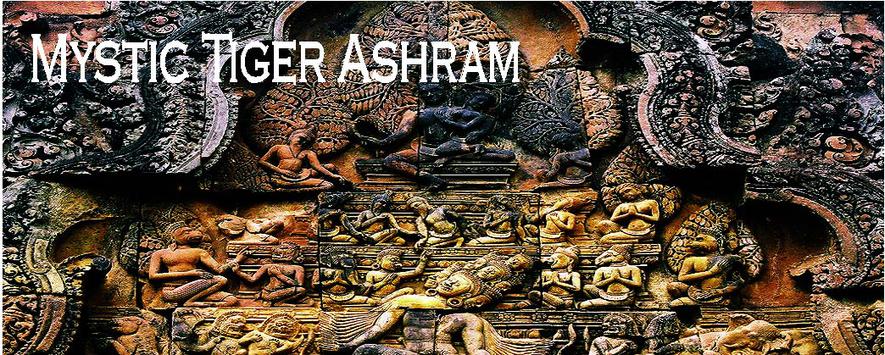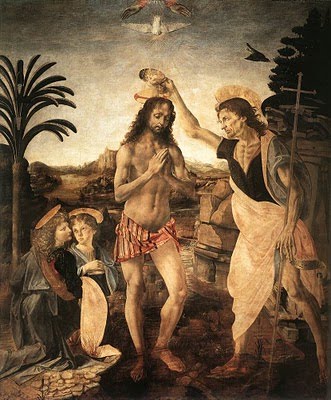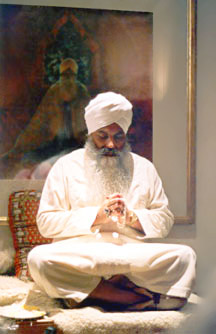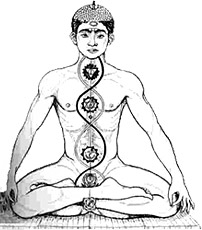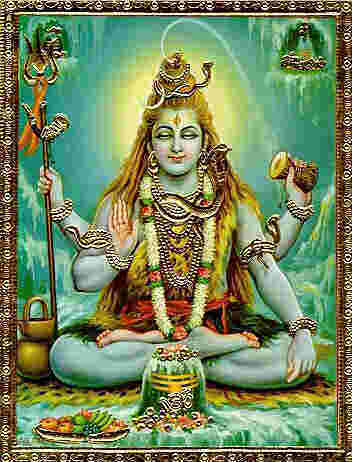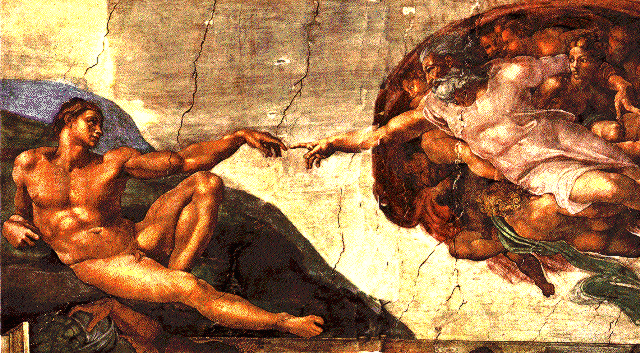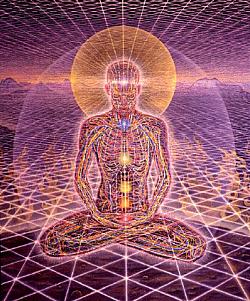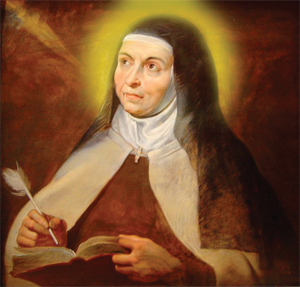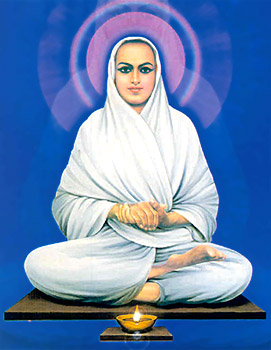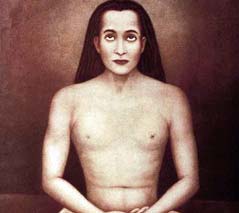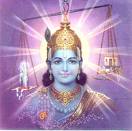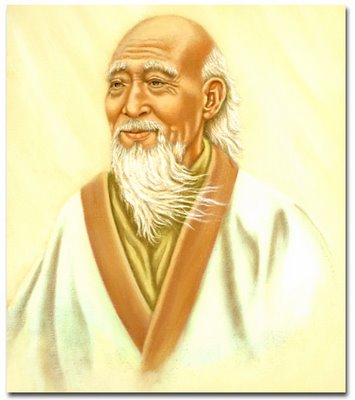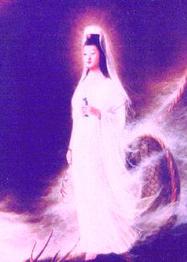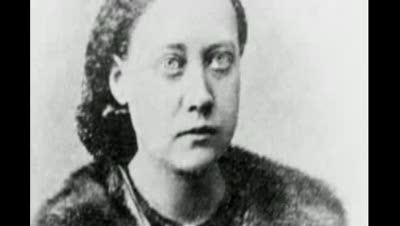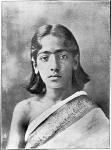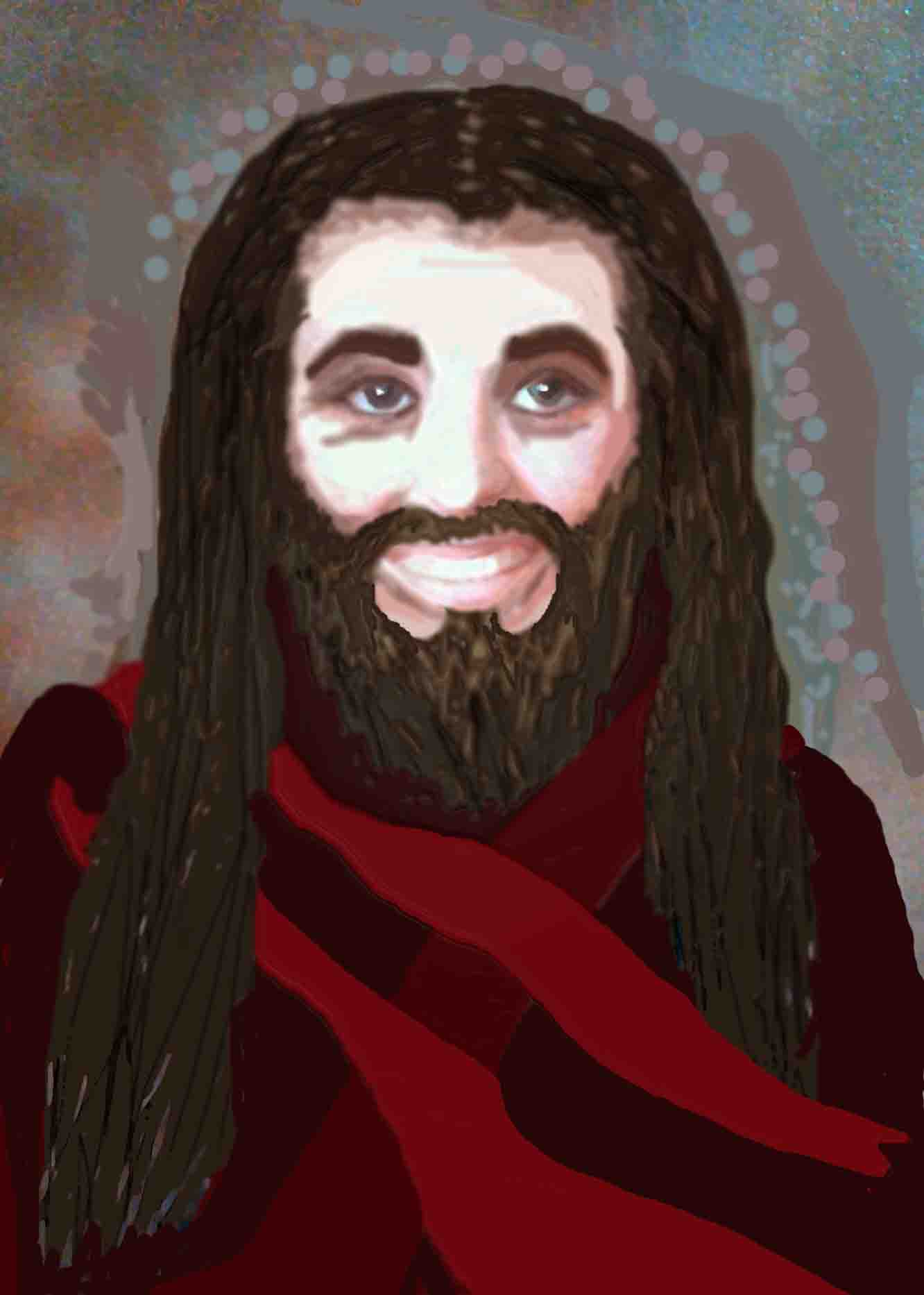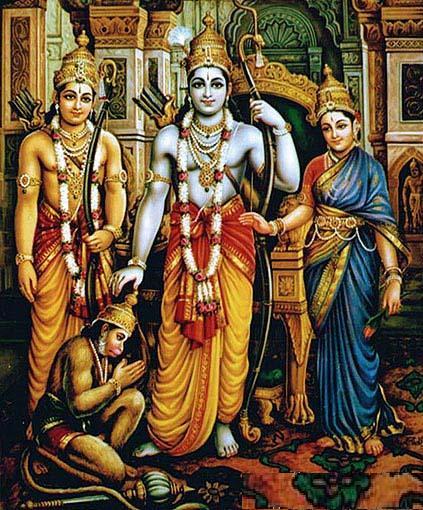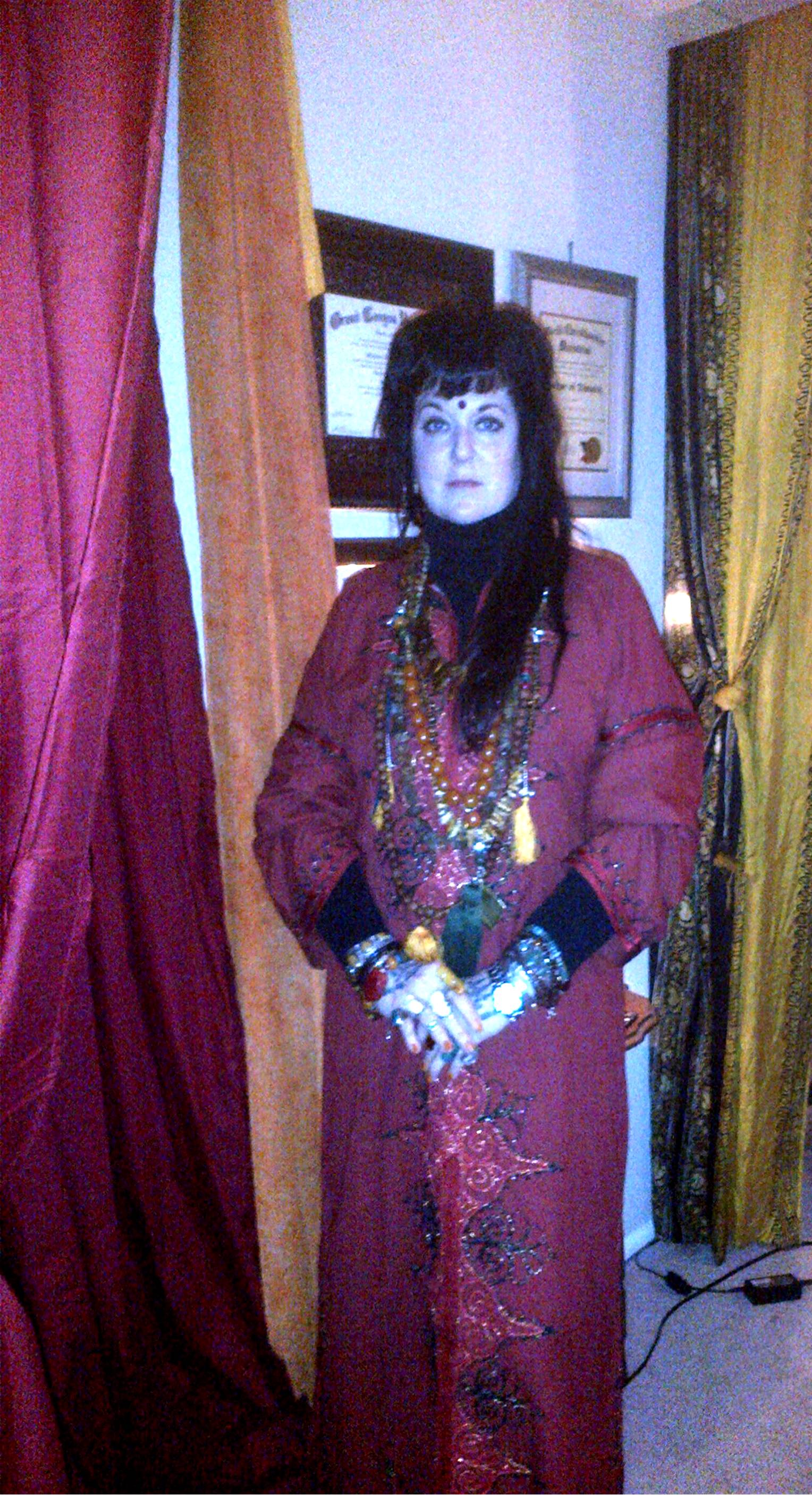Welcome to...
   Insights into Mystical Experience with               Relationship to Enlightenment!
A Spiritual Haven for All People and for All Times!Â
Copyright 2010 Mystic Tiger Ashram/Sharon R. StoneÂ
All Rights Reserved. No part of this site in whole or in part may be copied.without written permission of the administrator.Â
 | ||||||
 | ||||
Mystic Experience from both Western and Eastern beginnings...
Cosmic Consciousness
Baptism of the Holy Spirit
Nirvikalpa Samadhi Self-Realization
Need for Guru's
How to find a Guru
Divine Feminine, Brahma &Ganesha
 | ||||||
"All religions point to the same central matter at hand, and that is the 'baptism' of the Holy Spirit of God washing through the heart, soul and body of men and women.
Some call it the baptism of fire or spirit, some call it enlightenment, still others cosmic consciousness... but this same unifying aspect of central 'belief' cannot be escaped and the perpetuation of the ignorant who would make cause to separate mankind into different houses segregating the pure from the impure is the work of diabolical and insecure minds."Â
Swami Ramaraaja Stone
Discussion on:Â
Cosmic Consciousness,Â
Peak Experience,Â
Mystical Experience
by Abraham Maslow
Examine the relationship to peak experience as defined by Maslow and how such an experience led to the formulation of "Integrated Theory of Intelligence" which is also an approach to a "Theory of Everything".
Abraham Maslow – Defined peak experience in a very specific way. Led to the formulation of the “Integrated Theory of Intelligence� which discusses the interrelationship of intelligence-consciousness to matter-energy and space-time and the evolution of these properties that define the basic fabric that comprises the universe. Detailed in Preface Part II.
Peak experience as defined by Abraham Maslow, represents a Supraconsciousness state with certain well-defined characteristic features. Much has been written about P.E. and the term has become broadened from its original meaning. The definition that applies to Integrated Theory of Intelligence is briefly outlined below. If a more thorough understanding of peak experience is desired please refer to Part II of the Preface and Chapters 1 and 16.
P.E. represents one of at least several altered states of consciousness and might be referred to as a transient state of supraconsciousness. It is a relatively common occurrence and one poll indicates that over one-third of all individuals claim to have had one: Maslow first discovered what he called "peak experiences" in self-actualizing individuals; however, it gradually became apparent to him that a great many people have them. He believed that so-called "mystical experiences" were essentially the same thing as P.E. I believe that they are the same, but prefer the term P.E. because of the lack of supernaturalness implied by the latter. P.E. is also a phenomenon, which has been evaluated scientifically, and should be readily accepted by many to represent a valid altered state of consciousness, with only its source remaining in question.
Maslow concluded that during a P.E. people have a better, truer perception of reality. During this altered state an individual achieves the same insights that many philosophers have had regarding the unifying aspects of reality. Some of the words he compiled which are common to P.E. include truth, beauty, joy, ecstasy, wholeness, dichotomy-transcendence, perfection, order, simplicity, uniqueness, justice and completion.
Briefly stated, Maslow describes the major features of a peak experience in the following way, which also should again be noted as paralleled by my own experience. One has the perception that the universe is a totally integrated and unified whole and that one is a part of it. A "cosmic consciousness" is experienced so that the whole cosmos is perceived as a unity and one's own place in this whole is simultaneously understood. Self-boundaries are lost as one becomes integrated with the rest of existence; however, self-identity and individual awareness persist.
During a P.E. one's concentration is totally absorbed and there is the truest and most total kind of visual perceiving or listening or feeling." One experiences superhuman, almost "god-like" perception of apparent reality. There is a feeling of omniscience. Great insights and revelations are achieved and profoundly felt, associated with feelings of intense joy and ecstasy. The experience alters one's perception of the meaning and value of life, and makes life seem much more important and worthwhile. There is a time and space disorientation so that the ability to estimate a time interval is lost.
The dichotomies, polarities and conflicts of life are transcended and resolved. The world is seen only as a beautiful, good, desirable place to be. It is never experienced as evil. The presence of evil is accepted and understood as part of the whole - as being unavoidable and necessary. During the omniscient perceptive state, evil is seen as a product of limited or selfish vision and understanding. The greater the understanding, the less the condemnation or blame, disappointment and shock that will be experienced. There is a transient loss of all anxiety, fear, confusion, conflict and inhibition. It produces the long-lasting effect of one becoming more loving, honest, innocent, non-needing, less selfish, and even more god-like. One is left with an all-embracing love for everybody and everything, which in turn leads to a strong impulse (drive) to do something good for the world. There is an eagerness to repay the peak experience with a sense of obligation and dedication to humanity. The best verbal description of a P.E. is not nearly good enough, since words cannot begin to capture the essence of the experience!
There are many reports of creative acts that have apparently occurred during altered states of consciousness, thus supporting the commonly held notion that altered states allow the unconscious process to operate more freely. Harman and Rheingold, after researching case histories of scientists, "found that not only many specific scientific discoveries but the very foundations of science itself were built on breakthrough experiences, later backed up by empirical investigation�
When the Integrated Theory of Intelligence was first developed in 1984 there was less scientific evidence to support the conclusions offered in the text. Since then there has been considerable progress and there is more scientific evidence accumulating to support the theory. For those that are interested, a reading list of books can be accessed through this web page, each with a short synopsis summarizing how the information within the book gives additional support to the concepts presented in Integrated Theory of Intelligence.
It is the author’s belief that in time the theory as presented will become a commonly held worldview within the scientific community. If so, this will be strong evidence toward validating the importance of P.E. as a source for breakthrough insights.
Taken from: http://www.supraconsciousnessnetwork.org/DP
Peakexperience.htm
Nirvikalpa Samadhi & Self-RealizationÂ
by Dr. Harsh K. Luthar
"Nirvikalpa Samadhi cannot be understood without direct experience. But it is not impossible to understand it. If it was a state that is beyond understanding, Sages such as Shankracharya and Ramana Maharishi would not be able to speak of it. Such is not the case. People who speak about Nirvakalpa Samadhi without actually experiencing it can only speculate about its nature. Because such people are confused about Nirvikalpa Samadhi, their statements create confusion for others." - Dr. Harsh K. L
Sometimes people say that Nirvikalpa Samadhi is a state where there is no knower and known. That is really a half-truth. To capture the essence of Nirvikalpa Samadhi, it is better to say that in Nirvikalpa the KNOWER and the KNOWN are IDENTICAL. It is only pure consciousness that by which its very nature is self-revealing and self-knowing.
Nirvikalpa in Sanskrit means "without thought or doubt or mental modification". It is the absence of mental modification and presence of fullness of consciousness in Nirvikalpa Samadhi which allows for the clear recognition of the Self.
Self is both the Knower and the Known, the Seer and the Seen, without any duality. Self, being one without a second, is always self- knowing. There is no "other" for it to know. That is why we refer to the Self as Nirvikalpa. The reference to Nirvikalpa implies the nondual nature of the Self.
While deep sleep is a state of complete unconsciousness, Nirvikalpa Samadhi is the state of Full and Complete Consciousness. Deep sleep and Nirvikalpa Samadhi are the two sides of the same coin. In a very real and true sense Nirvikalpa Samadhi is the state of "deep awake". One is fully asleep to the world of perceptions and fully awake in the Self, which is Sat-Chit-Ananda.
Nirvikalpa Samadhi cannot be understood without direct experience. But it is not impossible to understand it. If it was a state that is beyond understanding, Sages such as Shankracharya and Ramana Maharishi would not be able to speak of it. Such is not the case. People who speak about Nirvakalpa Samadhi without actually experiencing it can only speculate about its nature. Because such people are confused about Nirvikalpa Samadhi, their statements create confusion for others.
The mind can continue to exist and function after Nirvikalpa Samadhi. Through the existing mental apparatus, the Sage can teach and experience via the mind and the body. The Sage may weep or laugh or eat or sleep or dream. All those things are due to mental modifications and unrelated to the Self-nature.
After Self-Realization, the mind is seen as existing but not separate from the Self. The Self Knows Itself even though the mind still exists. The mind exists as a condition that rises from the Self and then is absorbed back into it. It is due to the presence of the Mind, (until the departure from the body), that Knowledge of the Self can be passed on by the Realized beings to others who seek such knowledge.
Namaste and love to all
Dr. Harsh K. Luthar
www.luthar.com/nirvikalpa-samadhi-and-self-knowledge
Indispensability ofÂ
Guru’s GuidanceÂ
& Mother’s Grace
Sakti Yoga Sadhana is to be practised in a perfect, practical way under the guidance of a Guru who has become perfect. Guru is indispensable for the practice of Sakti Yoga Sadhana. He initiates the aspirant and transmits the divine Sakti.
No one can free himself from the thralldom of mind and matter without Mother’s grace. The fetters of Maya are too hard to break. If you worship Her as the great Mother, you can very easily go beyond Prakriti through Her benign grace and blessings. She will remove all obstacles in the path, lead you safely into the illimitable domain of eternal bliss, and make you absolutely free. When She is pleased and bestows Her blessings on you, then alone you can free yourself from the bondage of this formidable Samsara.
Knowledge of Sakti Leads to Salvation
Knowledge of Sakti leads to salvation. “Sakti-Jnanam Vina Devi Nirvanam Naiva Jayate—O Devi! Without the knowledge of Sakti, Mukti cannot be attained�—says Siva to Devi. The Jiva or the individual soul thinks, when he is under the influence of Maya, that he is the doer and the enjoyer and identifies himself with the body. Through the grace of Sakti and through Sadhana or self-culture, the individual soul frees himself from all fetters and attains spiritual insight and merges himself in the Supreme.
Worship of the Divine Mother, intense faith and perfect devotion and self-surrender, will help you to attain Her grace. Through Her grace alone you can attain Knowledge of the Imperishable.
Glory to Sri Tripurasundari, the World-Mother, who is also Rajarajesvari and Lalita-Devi. May Her blessings be upon you all. May you all obtain the grace of Sakti, the Universal Mother and enjoy the supreme bliss of final emancipation.
The Sakti Yoga PhilosophyÂ
Excerpted from “ALL ABOUT HINDUISM,� by SRI SWAMI SIVANANDA. A DIVINE LIFE SOCIETY PUBLICATION. World Wide Web (WWW) Edition : 1999. WWW site: http://www.dlshq.org/
This WWW reprint is for free distribution. © The Divine Life Trust Society. ISBN 81-7052-047-9.]
The Sadguru is Brahman
The Guru is God Himself manifesting in a personal form to guide the aspirant. Grace of God takes the form of the Guru. To see the Guru is to see God. The Guru is united with God. He inspires devotion in others. His presence purifies all.
The Guru is verily a link between the individual and the immortal. He is a being who has raised himself from this into That, and thus has free and unhampered access into both the realms. He stands, as it were, upon the threshold of immortality; and, bending down he raises the struggling individuals with his one hand, and with the other lifts them up into the empyrean of everlasting joy and infinite Truth-Consciousness.
THE SADGURU
To be a Guru, one must haveÂ
a command from God.
Mere study of books cannot make one a Guru. One who has studied the Vedas, and who has direct knowledge of the Atman (Self) through Anubhava (experience), can alone be enrolled as a Guru. A Jivanmukta or liberated sage is the real Guru or spiritual preceptor. He is the Sadguru. He is identical with Brahman or the Supreme Self. He is a Knower of Brahman.
A Sadguru is endowed with countless Siddhis (psychic powers). He possesses all divine Aisvarya (powers), all the wealth of the Lord.
Possession of Siddhis, however, is not the test to declare the greatness of a sage or to prove that he has attained Self-realisation. Sadgurus generally do not exhibit any miracle or Siddhi. Sometimes, however, they may do so in order to convince the aspirants of the existence of superphysical things, give them encouragement, and instill faith in their hearts.
The Sadguru is Brahman Himself. He is an ocean of bliss, knowledge, and mercy. He is the captain of your soul. He is the fountain of joy. He removes all your troubles, sorrows, and obstacles. He shows you the right divine path.
He tears your veil of ignorance. He makes you immortal and divine. He transmutes your lower, diabolical nature. He gives you the rope of knowledge, and takes you up when you are drowning in this ocean of Samsara (cycle of birth and death). Do not consider him to be only a man. If you take him as a man, you are a beast. Worship your Guru and bow to him with reverence.
Guru is God. A word from him is a word from God. He need not-teach anything. Even his presence or company is elevating, inspiring, and stirring, His very company is self-illumination. Living in his company is spiritual education. Read the Granth-saheb (the holy scripture of the Sikh religion). You will come to know the greatness of the Guru.
Man can learn only from man, and hence God teaches through a human body. In your Guru, you have your human ideal of perfection. He is the pattern into which you wish to mould yourself. Your mind will readily be convinced that such a great soul, is fit to be worshipped and revered.
Guru is the Moksha-dvara (door to liberation). He is the gateway to the transcendental Truth-Consciousness. But, it is the aspirant who has to enter through it. The, Guru is a help, but the actual task of practical Sadhana (spiritual practice) falls on the aspirant himself.
THE NEED FOR A GURU
For a beginner in the spiritual path, a Guru is necessary. To light a candle, you need a burning candle. Even an illumined soul alone can enlighten another soul.
Some do meditation for some years independently. Later on, they actually feel the necessity of a Guru. They come across some obstacles in the way. They are unable to know how to obviate these impediments or stumbling blocks. Then they begin to search for a Master.
Only the man who has already been to Badrinath will be able to tell you the road. In the case of the spiritual path, it is still more difficult to find your way. The mind will mislead you very often. The Guru will be able to remove pitfalls and obstacles, and lead you along the right path. He will tell you: "This road leads you to Moksha (liberation); this one leads to bondage". Without this guidance, you might want to go to Badrinath, but find yourself in Delhi!
The scriptures are like a forest. There are ambiguous passages. There are passages which are apparently contradictory. There are passages which have esoteric meanings, diverse significance, and hidden explanations. There are cross-references. You are in need of a Guru or Preceptor who will explain to you the right meaning, who will remove doubts and ambiguities, who will place before you the essence of the teachings.
A Guru is absolutely necessary for every aspirant in the spiritual path. It is only the Guru who will find out your defects. The nature of egoism is such that you will not be able to find out your own defects. Just as a man cannot see his back, so also he cannot see his own errors. He must live under a Guru for the eradication of his evil qualities and defects.Â
The aspirant who is under the guidance of a Master or Guru is safe from being led astray. Satsanga or association with the Guru is an armour and fortress to guard you against all temptations and unfavourable forces of the material world.
Cases of those who had attained perfection without study under any Guru should not be cited as authority against the necessity of a Guru; for, such great souls are the anomalies of spiritual life, and not the common normality.They come into existence as spiritual masters as a result of the intense service, study, and meditation practised in previous births. They had already studied under the Guru. The present birth is only its continuative spiritual effect. Hence, the importance of the Guru is not lessened thereby.
All great ones had their teachers. All the sages, saints, prophets, world- teachers, incarnations, great men, have had their own Gurus, however great they might have been. Svetaketu learnt the nature of Truth from Uddalaka, Maitreyi from Yajnavalkya, Bhrigu from Varuna, Narada from Sanatkumara, Nachiketas from Yama, Indra from Prajapati; and several others humbly went to wise ones, observed strict Brahmacharya, practised rigorous discipline, and learnt Brahma-vidya (the science of God) from them.
Lord Krishna sat at the feet of His Guru Sandeepani. Lord Rama had Guru Vasishtha who gave Him Upadesha (spiritual advice). Lord Jesus sought John to be baptised by him on the banks of the river Jordan. Even Devas (celestial beings) have Brihaspati as their Guru. Even the greatest among the divine beings sat at the feet of Guru Dakshinamurti.
A neophyte must have a personal Guru first. He cannot have God as Guru to begin with. He must have a pure mind. He must have ethical perfection. He, must be intensely virtuous. He must be above body-consciousness. Then alone can he have God as Guru.Â
HOW TO CHOOSE YOUR GURU
If you find peace in the presence of a Mahatma (great soul), if you are inspired by his speeches, if he is able to clear your doubts, if he is free, from greed, anger, and lust, if he is selfless, loving, and I-less, you can take him as your Guru. He who is able to clear your doubts, he who is sympathetic in your Sadhana, he who does not disturb your beliefs but helps you on from where you are, he in whose very presence you feel spiritually elevated-he is your Guru. Once you choose Your Guru, implicitly follow him. God will guide you through the Guru.
Do not use your reason too much in the selection of your Guru. You will fail if you do so. If you fail to get a first-class Guru, try to follow the instructions of the Sadhu (a spiritual person) who is treading the path for some years, who has purity and other virtuous qualities, and who has some knowledge of the scriptures. Just as a student of the Intermediate class will be able to teach a student of Third Form when a professor with M.A. qualification is not available, just as a sub-assistant surgeon will be able to attend on a patient when the civil surgeon is not available, this second- class type of Guru will be able to help you.
If you are not able to find out even this second-class type of Guru, you can follow the teachings contained in the books written by realised saints like Sri Sankara, Dattatreya, and others. You can keep a photo of such a realised Guru, if available, and worship the same with faith and devotion. Gradually you will get inspiration, and the Guru may appear in dream and initiate and inspire you at the proper time. For a sincere Sadhak (aspirant), help comes in a mysterious manner. When the time is ripe, the Guru and the disciple are brought together by the Lord in a mysterious way.
MYSTERIOUS HELP FROM THE LORD
Just see how the Lord has helped the devotees in the following instances. Eknath heard an Akasavani (a voice from the sky). It said, "See Janardan Pant at Deva Giri. He will put you in the proper path and guide you." Eknath acted accordingly and found his Guru. Tukaram received his Mantra, Rama Krishna Hari, in his dream. He repeated this Mantra and had Darshan (vision) of Lord Krishna. Lord Krishna directed Namdev to get his higher initiation from a Sannyasin (renunciate) at Mallikarjuna. Queen Chudalai assumed the form, of Kumbha Muni, appeared before her husband Sikhidhwaja in the forest, and initiated him in the mysteries of Kaivalya (state of absolute independence). Madhura Kavi saw a light in the firmament for three days consecutively. It guided him and took him to his Guru Nammalvar who was sitting in Samadhi underneath a tamarind tree near Tinnevelly. Vilvamangal was very much attracted to Chintamani, the dancing woman. The latter became his Guru. Tulasidas received instructions from an invisible being to see Hanuman and, through Hanuman, to get Darshan of Sri Rama.
Competent disciples are never in want of a competent Guru. Realised souls are not rare. Ordinary ignorant-minded persons cannot easily recognise them. Only a few persons, who are pure and embodiments of all virtuous qualities, can understand realised souls, and they only will be benefited in their company.
So long as there is a world, there are Gurus and Vedas to guide the struggling souls in the path of Self-realisation. The number of realised souls may be less in the Iron Age when compared with the Satya Yuga (age of Truth), but they are always present to help the aspirants. Let each man take the path according to his capacity, temperament, and understanding. His Sadguru will meet him along that path.
SIKSHA GURUS AND DIKSHA GURU
Man has a twofold duty here on earth-to preserve his life, and to realise his Self. To preserve his life, he has to learn to work for his daily bread. To realise his Self, he has to serve, love, and meditate. The Guru who teaches him the knowledge of worldly arts is the Siksha Guru. The Guru who shows him the path of Realisation is the Diksha Guru. Siksha Gurus can be many-as many as the things he wishes to learn. The Diksha Guru can be only one-the one who leads him to Moksha.
STICK TO ONE GURU
Do not dig here and there shallow pits for getting water. The pits will dry up soon. Dig a very deep pit in one place. Centralise all your efforts here. You will get good water that can supply you throughout the year. Even so, try to imbibe thoroughly the spiritual teachings from one preceptor alone. Drink deep from one man. Sit at his feet for some years. There is no use of wandering from one guru to another guru, out of curiosity, losing faith in a short time. Do not have the ever-changing mind of a prostitute. Follow the spiritual instructions of one man only. If you go to several people and follow the instructions of many persons, you will be bewildered. You will be in a dilemma.
From a doctor, you get a prescription. From two doctors, you get consultation. From three doctors, you get your own cremation. Even so, if you have many Gurus, you will be bewildered. You will be at a loss to know what to do. One Guru will tell you: "Do Soham Japa". Another will tell you: "Do Japa of Sri Ram". A third Guru will tell you: "Hear Anahat (mystic) sounds". You will be puzzled. Stick to one Guru and follow his or her instructions.
Listen to all, but follow one. Respect all, but adore one. Gather knowledge from all, but adopt the teachings of one Master. Then you will have rapid spiritual progress.
INITIATION - ITS MEANING
A Bhakta will be initiated by a Bhakta saint in the path of devotion. A Jnani will initiate a student of Vedanta in the Mahavakyas. A Hatha Yogi or a Raja Yogi can initiate another in his particular path. But, a sage of perfect realisation, a Purna-jnani (full-blown sage) or Purna-yogi, can give initiation in any particular path. A sage or saint like Sri Sankara or Madhusudana Sarasvati can initiate a Sadhak in any particular path for which the aspirant is fit. The Guru will find out by close study of the aspirant his tastes, temperaments, and capacity, and decide for him the most suitable path. If his heart is impure, the teacher will prescribe selfless service for a number of years. Then the Guru will find out for what particular path the student is fit and initiate him in that.
Initiation does not mean reciting a Mantra into another's ears. If Rama is influenced by the thoughts of Krishna, the former has got initiation already from the latter. If an aspirant treads the path of truth after studying the books written by a saint, and imbibes his teachings, that saint has already become his Guru.
SAKTI-SANCHAR
Just as you can give an orange to a man, so also, spiritual power can be transmitted by one to another. This method of transmitting spiritual powers is termed Sakti-sanchar. In Sakti-sanchar, a certain spiritual vibration of the Sadguru is actually transferred to the mind of the disciple.
Spiritual power is transmitted by the Guru to the proper disciple whom he considers fit for Sakti-sanchar. The Guru can transform the disciple by a look, a touch, a thought or a word, or mere willing.
Sakti-sanchar comes through Parampara. It is a hidden mystic science. It is handed down from Guru to disciple.Â
Lord Jesus, through touch, transmitted his spiritual power to some of his disciples. A disciple of Samartha Ramdas transmitted his power to that dancing girl's daughter who was very passionate towards him. The disciple gazed at her and gave her Samadhi. Her passion vanished. She became very religious and spiritual. Lord Krishna touched the blind eyes of Surdas. The inner eye of Surdas was opened. He had Bhava Samadhi. Lord Gouranga, through his touch, produced divine intoxication in many people and converted them to his side. Atheists even danced in ecstasy in the streets by his touch and sang songs of Hari.
The disciple should not rest satisfied with the transmission of power from the Guru. He will have to struggle hard in Sadhana for further perfection and attainments. Sri Ramakrishna Parama-hamsa touched Swami Vivekananda. Swami Vivekananda had superconscious experience. He struggled hard for seven years more, even after the touch, for attaining perfection.
GRACE AND SELF-EFFORT
Realisation cannot come to you as a miracle done by your Guru. Lord Buddha, Lord Jesus, Rama Tirtha have all done Sadhana. Lord Krishna asks Arjuna to develop Vairagya (dispassion) and Abhyasa (practice). He did not say to him, "I will give you Mukti(liberation) now". Therefore, abandon the wrong notion that your Guru will give you Samadhi and Mukti. Strive, purify, meditate, and realise.
Guru-kripa-grace of a Guru-is very necessary. That does not mean that the disciple should sit idle. He must do rigid Purushartha, spiritual practices. The whole work must be done by the student. Nowadays, people want a drop of water from the Kamandalu (water-pot) of a Sannyasin and desire to enter into Samadhi immediately. They are not prepared to undergo any Sadhana for purification and Self-realisation. They want a magic pill to push them into Samadhi. If you have got such delusion, give it up immediately.
The Guru and the Shastras can show you the path and remove your doubts. Anubhava (direct experience) of the Aparoksha kind or direct intuitive knowledge is left for your own experience. A hungry man will have to eat for himself. He who has a severe itching will have to scratch for himself.
No doubt, the Guru's blessing can do everything. But how can one have his blessings? By pleasing the Guru. A Guru can be pleased with his disciple only if the latter carries out his spiritual instructions implicitly. Carefully follow, therefore the instructions of the Guru. Act up to his instructions. Then only will you deserve his blessings, and then alone his blessings can do everything."
Swami Sivananda, Divine Life Society
The Mahadevi
Central Theological &Â
Philosophical Characteristics
An underlying theological assumption in texts celebrating the Mahadevi is that the ultimate reality in the universe is a powerful, creative, active, transcendent female being. The Lalita-sahasranama gives many names of the Mahadevi, and several of her epithets express this assumption. She is called, for example, the root of the world (Jagatikanda, name 325), she who transcends the universe (Visvadhika, 334), she who has no equal (Nirupama, 389), supreme ruler (Paramesvari, 396), she who pervades all (Vyapini, 400), she who is immeasurable (Aprameya, 413), she who creates innumerable universes (Anekakotibrahmandajanani, 620), she whose womb contains the universe (Visvagarbha, 637), she who is the support of all (Sarvadhara, 659), she who is omnipresent (Sarvaga, 702), she who is the ruler of all worlds (Sarvalokesi, 758), and she who supports the universe (Visvadharini, 759). In the Devi-bhagavata-purana, which also assumes the ultimate priority of the Mahadevi, she is said to be the mother of all, to pervade the three worlds, to be the support of all (1.5.47-50), to be the life force of all beings, to be the ruler of all beings (1.5.51-54), to be the only cause of the universe (1.7.27), to create Brahma, Visnu, and Siva and to command them to perform their cosmic tasks (3.5.4.), to be the root of the tree of the universe (3.10.15), and to be she who is supreme knowledge (4.15.12). The text describes her by many other names and phrases as it exalts her to a position of cosmic supremacy.
One of the central philosophic ideas underlying the Mahadevi, an idea that in many ways captures her essential nature, is sakti. Sakti means "power"; in Hindu philosophy and theology sakti is understood to be the active dimension of the godhead, the divine power that underlies the godhead's ability to create the world and to display itself. Within the totality of the godhead, sakti is the complementary pole of the divine tendency towards quiescence and stillness. It is quite common, furthermore, to identify sakti with a female being, a goddess, and to identify the other pole with her male consort. The two poles are understood to be interdependent and to have relatively equal status in terms of divine economy.Â
Texts of contexts exalting the Mahadevi, however, usually affirm sakti to be a power, or the power, underlying ultimate reality, or to be the ultimate reality itself. Instead of being understood as one or two poles or as one dimension of a bipolar conception of the divine, sakti as it applies to the Mahadevi is often identified with the essence of reality. If the Mahadevi as sakti is related to another dimension of the divine in the form of a male deity, he will tend to play a subservient role in relation to her. In focussing on the centrality of sakti as constituting the essence of the divine, texts usually describe the Mahadevi as a powerful, active, dynamic being who creates, pervades, governs, and protects the universe. As sakti, she is not aloof from the world but attentive to the cosmic rhythms and the needs of her devotees.
In a similar vein the Mahadevi is often identified with prakrti and maya. Indeed, two of her most common epithets are Mulaprakrti (she who is primordial matter) and Mahamaya (she who is great maya)... In the quest for liberation prakrti represents that from which one seeks freedom. Similarly, most schools of Hindu philosophy identify maya with that which prevents one from seeing things as they really are. Maya is the process of superimposition by which one projects one's own ignorance on the world and thus obscures ultimate truth. To wake up to the truth of things necessarily involves counteracting or overcoming maya, which is grounded in ignorance and self-infatuation. Liberation in Hindu philosophy means to a great extent the transcendence of embodied, finite, phenomenal existence. And maya is often equated precisely with finite, phenomenal existence. To be in the phenomenal world, to be an individual creature, is to live enveloped in maya.
When the Mahadevi is associated with prakrti or maya, certain negative overtones sometimes persist. As prakrti or maya she is sometimes referred to as the great power that preoccupies individuals with phenomenal existence or as the cosmic force that impels even the gods to unconsciousness and sleep. But the overall result of the Mahadevi's identification with prakrti and maya is to infuse both ideas with positive dimensions. As prakrti or maya, the Devi is identified with existence itself, or with that which underlies all existent things. The emphasis is not on the binding aspects of matter or the created world but on the Devi as the ground of all things. Because it is she who pervades the material world as prakrti or maya, the phenomenal world tends to take on positive qualities. Or perhaps we could say that a positive attitude toward the world, which is evident in much of popular Hinduism, is affirmed when the Devi is identified with prakrti and maya. The central theological point here is that the Mahadevi is the world, she is all this creation, she is one with her creatures and her creation. Although a person's spiritual destiny ultimately may involve transcendence of the creation, the Devi's identification with existence per se is clearly intended to be a positive philosophical assertion. She is life, and to the extent that life is cherished and revered, she is cherished and revered.
As sakti, prakrti, and maya, the Devi is portrayed as an overwhelming presence that overflows itself, spilling forth into the creation, suffusing the world with vitality, energy, and power. When the Devi is identified with these well-known philosophical ideas, then, a positive point is being made: the Devi creates the world, she is the world. and she enlivens the world with creative power. As sakti, prakrti, and maya, she is not understood so much as binding creatures to finite existence as being the very source and vitality of creatures. She is the source of creatures—their mother—and as such her awesome, vital power is revered.
The idea of brahman is another central idea with which the Devi is associated. Ever since the time of the Upanishads, brahman has been the most commonly accepted term or designation for the ultimate reality in Hinduism. In the Upanishads, and throughout the Hindu tradition, brahman is described in two ways: as nirguna (having no qualities or beyond all qualities) and saguna (having qualities). As nirguna, which is usually affirmed to be the superior way of thinking about brahman, ultimate reality transcends all qualities, categories, and limitations. As nirguna, brahman transcends all attempts to circumscribe it. It is beyond all name and form (nama-rupa). As the ground of all things, as the fundamental principle of existence, however, brahman is also spoken of as having qualities, indeed, as manifesting itself in a multiplicity of deities, universes, and beings. As saguna, brahman reveals itself especially as the various deities of the Hindu pantheon. The main philosophical point asserted in the idea of saguna brahman is that underlying all the different gods is a unifying essence, namely, brahman. Each individual deity is understood to be a partial manifestation of brahman, which ultimately is beyond all specifying attributes, functions, and qualities.
The idea of brahman serves well the attempts in many texts devoted to the Devi to affirm her superior position in the Hindu pantheon. The idea of brahman makes two central philosophical points congenial to the theology of the Mahadevi: (1) she is ultimate reality itself, and (2) she is the source of all divine manifestations, male and female (but especially female). As saguna brahman, the Devi is portrayed as a great cosmic queen enthroned in the highest heaven, with a multitude of deities as the agents through which she governs the infinite universes. In her ultimate essence, however, some texts, despite their clear preference for the Devi's feminine characteristics, assert in traditional fashion that she is beyond all qualities, beyond male and female."Â
David R. Kinsley, Hindu goddesses: visions of the divine feminine in the Hindu religious tradition
University of California Press; 1 edition (July 19, 1988) , Pages 133-37
ISBN-10: 0520063392
ISBN-13: 978-0520063396
Sakti-Yoga Sadhana
Saktaism is not mere theory or philosophy. It prescribes systematic Sadhana of Yoga, regular discipline according to the temperament, capacity and degree of evolution of the Sadhaka. Sadhana means unfolding, rousing up or awakening of the power of Sakti. Saktaism helps the aspirant to arouse the Kundalini and unite Her with Lord Siva and to enjoy the supreme bliss or Nirvikalpa Samadhi. A Sakta does Sadhana which helps the union of Siva and Sakti through the awakening of the forces within the body. He becomes a Siddha in the Sadhana when he is able to awaken Kundalini and pierce the six Chakras. The mode of Sadhana depends upon the tendencies and capacities of the Sadhaka.
Bhava or Attitude
The aspirant thinks that the world is identical with the Divine Mother. He moves about thinking his own form to be the form of the Divine Mother and thus beholds oneness everywhere. He also feels that the Divine Mother is identical with Brahman.
The advanced Sadhaka feels: “I am the Devi and the Devi is in Me.� He worships himself as Devi instead of adoring any external object. He says: “Saham—I am She (Devi).�
Shri Ganesha: Saguna &Â
Nirguna Brahman
No other religion offers such insight into the intricate workings of our universe than Hinduism. More importantly, no other religion offers the grace of a God that is within us as well as within all things outside of ourselves, that is both within form as Saguna Brahman and beyond form as Nirguna Brahman and that may be known my the devout seeker even in this life. Little wonder that the Sanatana Dharma, the Eternal Path, has withstood the ravages of time and stands today as the most advanced system of philosophy and devotion on the earth. It is fully in accord with, and in fact its sages clearly anticipated, the advances of 20th Century science. Hinduism today stands as the religion of the village community as well as the urban family - an enlightened faith for all men in all times. The single most unifying force within Hinduism is Lord Ganesha, son of Siva/Sakti, beloved Deity of over 600 million Hindus.
It is an incontrovertible fact that Lord Ganesha is real, not a mere symbol. He is a potent force in the universe, not a representation of potent universal forces. Of course, Ganesha belongs to all mankind, not to Hindus alone, though not all men on the planet call Him by our name, Ganesha. ... To some Chinese He is Kuan-shi t'ien or Ho Tei, the large-bellied God of Happiness. To the Polynesians He is God Lono. The Tamils call him by the affectionate term Pilliar, Noble Child. The Tibetians know Him as ts' ogs-bdag, and the Burmese worship Maha-Pienne. In Mongolia His name is Totkhar-our Khaghan. Cambodians offer worship to Prah Kenes, and the Japanese supplicate Vinayaksa or Sho-ten. By some He is envisioned as the feminine Mother Nature, and even non-believers seek to understand Him through personifying His great powers as Fate, Destiny or Numen, The Greeks called Him Janus and sought His blessings at the outset of any new venture. ... In one form or another, Lord Ganesha is honored throughout the world. Hindus worship Him at countless pujas performed daily on every continent. In temples and home shrines Ganesha is worshipped today in India, Sri Lanka, Nepal, Malaysia, Java, Bali, Borneo, Tibet, Burma, Siam, China, Indo-China, Japan, Trinidad and Tobago, Hawaii and the Pacific Islands, Africa, Europe and North America.
The Three Meanings of Atman - Parabrahman, BrahmanÂ
and brahman
"Ultimately there is only one Self, the supreme Self, which is manifested at different levels of reality. First of all, the Paramatman, the Supreme Self, can be conceived as beyond all word and all thought. It is the ultimate transcendent mystery. Secondly, the atman can be conceived as the source of all reality, the source of all creation, of consciousness and of human existence. Thirdly, the same atman can be conceived as indwelling in each person, each thing. In each one of us the One, the Supreme Spirit, is dwelling. That Supreme Spirit dwelling in me is my higher Self. These three senses are fundamental. The absolute Supreme, beyond everything, the 'Parabrahman' or 'Paramatman', then the brahman or atman as the source of everything, the creator Spirit, and then the atman or brahman manifested in every person in every thing, the indwelling Self. That is my higher Self and it is ultimately one with the Supreme."
The One Light - Bede Griffiths' Principal Writings
Chapter IV, East, Part One - The Wisdom of India p.204
Edited and with Commentary by Bruno Barnhart
Templegate Publishers, Springfield, Illinois
ISBN 0-87243-254-8
The Mahadevi
Central Theological & Philosophical Characteristics
The Mahadevi, both the saguna and nirguna form, has always insisted on this: "Let Us Meditate". The appended article is probably the best i have read about the Mahadevi, who not only is my very Self (brahman) but the entire cosmos too (Brahman) ....... and Beyond (Parabrahman)!
This quintessence (the most perfect embodiment) of Divine Knowledge, the very elixir of immortality, ends all searching. It is a most priceless pearl of Sacred Knowledge that must be deeply contemplated forever.
regards to all, jagbir
BrahmanÂ
Brahman (Sanskrit: "the Supreme Being; the Absolute Reality; Godhead"), from the verb brh, "to grow", and connotes "immensity" — is the impersonal and immanent, infinite cause and support of the universe that has no form or attributes. The uncaused cause of the Universe; satchidnanda (Existence-Consciousness-Bliss Absolute), The Eternal Changeless Reality, not conditioned by time, space and causation. Brahman is the basis, source and support of everything — the transcendent reality which is the Divine Ground of all matter, energy, time, space, being, and everything beyond in this universe. Its nature consists of the three incommunicable attributes of (1) sat (Absolute Being), (2) chit (Consciousness), (3) ananda (Bliss). This Supreme Being assumes a dual nature — Male and Female. The male aspect is known as Purusha which means "that-which-fills" — and the Female aspect is known as Shakti which translates as "Energy" or "Dynamic Force" or Prakriti — material nature. Also called as Paramtman (Universal Self), Parasiva, Ultimate Reality, Supreme Being or the Absolute.
Description
The Vedas depict Brahman as the Ultimate Reality, the Absolute or Paramtman (Universal Self). Brahman is the indescribable, inexhaustible, incorporeal, omniscient, omnipresent, original, first, eternal, both transcendent and immanent, absolute infinite existence, and the ultimate principle who is without a beginning, without an end, who is hidden in all and who is the cause, source, material and effect of all creation known, unknown and yet to happen in the entire universe.
Brahman (not to be confused with the deity Brahma) is seen as a Cosmic Spirit. The personality behind Brahman is known as Parabrahman (The superior Brahman). Brahman may be viewed as Nirguna Brahman (without personal attributes) or Saguna Brahman (with attributes).Â
The Mundaka Upanishad says:Â
AUM That supreme Brahman is infinite, and this conditioned Brahman is
infinite.
The infinite proceeds from infinite.
Then through knowledge, realizing the infinitude of the infinite, it remains as infinite alone.
— Mundaka UpanishadÂ
Conceptualization
Brahman is not an object, as It is Adrisya, beyond the reach of the eyes. Hence the Upanishads declare: "Neti Neti—not this, not this…." This does not mean that Brahman is a negative concept, or a metaphysical abstraction, or a nonentity, or a void. It is not another. It is all-full, infinite, changeless, self-existent, self- delight, self-knowledge and self-bliss. It is Svarupa, essence. It is the essence of the knower. It is the Drashta (Seer), Turiya (Transcendent) and Sakshi (Silent Witness).
Brahman is said to be eternal, genderless, omnipotent, omniscient, and omnipresent, and ultimately indescribable in the human language. It can be at best described as infinite Being, infinite Consciousness and infinite Bliss. Brahman is regarded as the source and essence of the material universe. It is pure being. Brahman manifests as Hiranyagarbha, the "world soul", which also can take many forms or manifestations of the thousands of gods. It was deemed a singular substrate from which all that is arises, and debuts with this verse:Â
Great indeed are the devas who have sprung out of Brahman.
— Atharva Veda
Essentially, it is also beyond being and non-being alike, and thus does not quite fit with the usual connotations of the word God and even the concept of monism. For this reason, some authors use the word 'Godhead' for Brahman, to distinguish it from the usual usage of the word 'God'. To call this concept 'God' would be imprecise. The closest interpretation of the term can be found in the Taittariya Upanishad where Brahman is described in the following manner:
satyam jnanam anantam brahman /
"Brahman is of the nature of truth, knowledge and infinity"
Thus, Brahman is the origin and end of all things, material or otherwise. Brahman is the root source and Divine Ground of everything that exists, and does not exist.
The Hindu scriptures declare that Brahman (the impersonal God) is beyond description, and can be understood only through direct spiritual experience. Nevertheless, for the benefit of others, the ancient Hindu sages who experienced Brahman attempted to describe their experiences, as recorded in the ancient Vedic texts known as the Upanishads.Â
Several mahvkyas, or great sayings, indicate what the principle of Brahman is:
rajnnam brahma
"Brahman is knowledge"
ayam tm brahmaÂ
"The Self (or the Soul) is Brahman"Â
aham brahmsmi
"I am Brahman"
tat tvam asi
"You are that"Â
sarvam khalv idam brahma
"All this that we see in the world is Brahman"
sachchidnanda brahma
"Brahman is existence, consciousness, and happiness"Â
Thus, Brahman is conceived of as the very essence of existence and knowledge, which pervades the entire universe, including every living being. The goal of Hinduism is to somehow "wake up," and realize one's own connection to the divine reality that may be called Brahman or God. Because God is everywhere, God is also present within each living being.
Nirguna and Saguna Brahman
Brahman possesses infinite potential, power and intelligence, and therefore cannot be limited by a single name or form. Thus, Hindus view the Brahman as having two aspects: impersonal and personal. The impersonal aspect is called Nirguna Brahman in Hindu scriptures. Nirguna Brahman has no attributes and, as such, is not an object of prayer, but of meditation and knowledge. This aspect of Brahman is beyond conception, beyond reasoning and beyond thought. The personal aspect of Brahman is known as Saguna Brahman, that is Brahman with attributes.Â
Saguna Brahman and Nirguna Brahman are not two different Brahmans. Nirguna Brahman is not the contrast, antithesis or opposite of Saguna Brahman. The same Nirguna Brahman appears as Saguna Brahman for the pious worship of devotees. It is the same Truth from two different points of view. Nirguna Brahman is the higher Brahman, the Brahman from the transcendental viewpoint (Paramarthika); Saguna Brahman is the lower Brahman, the Brahman from the relative viewpoint (Vyavaharika).Â
Nirguna Brahman
The Absolute without qualities, is impersonal, without guna or attributes, Nirakara (formless), Nirvisesha (without special characteristics), immutable, eternal and Akarta (non-agent). It is above all needs and desires. It is always the Witnessing Subject. It can never become an object as It is beyond the reach of the senses. Brahman is non-dual, one without a second. It has no other beside It. It is destitute of difference, either external or internal. Brahman cannot be described, because description implies distinction. Brahman cannot be distinguished from any other than It. In Brahman, there is not the distinction of substance and attribute. Sat-Chit-Ananda (Truth-Consciousness-Bliss) constitute the very essence or Svarupa of Brahman, and not just Its attributes.
Saguna BrahmanÂ
Qualified absolute, came from the Sanskrit saguna "with qualities" and brahman "the Absolute." The personal aspect of the Ultimate Reality. Saguna Brahman is the creator, sustainer and controller of the universe. As the male aspect, Saguna Brahman is called by various Sanskrit names, such as Ishvara, Parameshvara, paramatma, Maheshvara, and Purusha. As the female aspect, Saguna Brahman is refered by various names, such as Divine Mother, Durgã and Kãlî.
Despite the abstract principle of Brahman, most Hindus worship Brahman on a day-to-day basis in one of Brahman's less abstract personal forms, such as Vishnu, Shiva, or Shakti. Some Hindus worship these personal forms for a practical reason: it is easier to cultivate devotion to a personal being than to an abstract principle. Other Hindus, such as those following the dvaita-advaita traditions, consider the personal forms in themselves to be the highest form of truth and worship Brahman as an infinite and yet personal being.
Enlightenment and BrahmanÂ
While Brahman lies behind the sum total of the objective universe, some human minds boggle at any attempt to explain it with only the tools provided by reason. Brahman is beyond the senses, beyond the mind, beyond intelligence, beyond imagination. Indeed, the highest idea is that Brahman is beyond both existence and non-existence, transcending and including time, causation and space, and thus can never be known in the same material sense as one traditionally 'understands' a given concept or object.
Imagine a person who is blind from birth and has not seen anything. Is it possible for us to explain to him the meaning of the colour red? Is any amount of thinking or reasoning on his part ever going to make him understand the sensation of the colour red? In a similar fashion the idea of Brahman cannot be explained or understood through material reasoning or any form of human communication. Brahman is like the colour red; those who can sense it cannot explain or argue with those who have never sensed it.
Brahman is considered the all pervading consciousness which is the basis of all the animate and inanimate entities and material. (brahmano hi pratisthaham, Bhagavad Gita 14.27)
http://veda.wikidot.com/brahman
Related Articles:
Yogic Secrets of the Dark Goddess by Shambhavi Chopra
After showering the first few raindrops i know She will continue
Kali as the Yuga Shakti: The Power to Create a New World Age
Chidagni: The Goddess as the Fire of Consciousness
The Divine Feminine in Biblical Wisdom Literature
The Divine Mother by Ricky Hoyt
The Divine Feminine In China
The Feminine Spirit: Recapturing The Heart Of Scripture
The Divine Feminine: The Great Mother
Searching for the Divine Feminine
Tao Te Ching: "Doorway of the Mysterious Female is there within us"
The Shekinah: Image of the Divine Feminine
The Shekinah is the Cosmic Womb
Shekinah: The Voice of Wisdom
On the Nature of the Divine Mother or Holy Spirit?
The Holy Spirit: The Feminine Aspect Of the Godhead
She is the holiest and most secret inwardness of Allah
The Indian Religion of the Goddess Shakti
The Divine Feminine is deeply embedded in us
Jesus finally restores all things to God
Divine Feminine will sooner or later begin to take its proper place
And they asked him in amazement: "Who is our Mother?
Feminine Gender of the Holy Spirit
She saw all gods & goddesses paying obeisance
The Great Mother is Sri Veda-Janani — Mother of the Vedas
NOTE: If this page was accessed during a web search you may wish to browse the sites listed below where this topic or related issues are discussed in detail to promote global peace, religious harmony, and spiritual development of humanity:
www.adishakti.org/
www.al-qiyamah.org/
www.adi-shakti.org/  — Divine Feminine (Hinduism)
www.holyspirit-shekinah.org/  — Divine Feminine (Christianity)
www.ruach-elohim.org/  — Divine Feminine (Judaism)
www.ruh-allah.org/  — Divine Feminine (Islam)
www.tao-mother.org/  — Divine Feminine (Taoism)
www.prajnaaparamita.org/  — Divine Feminine (Buddhism)
www.aykaa-mayee.org/  — Divine Feminine (Sikhism)
www.great-spirit-mother.org/  — Divine Feminine (Native Traditions)
"Now, the principle of Mother is in every, every scripture - has to be there." Shri Mataji, Radio Interview 1983 Oct 01, Santa Cruz, USA
"And there appeared unto them cloven tongues like as of fire, and it sat upon each of them. And they were all filled with the Holy Ghost, and began to speak with other tongues, as the Spirit gave them utterance."
Acts 2:3-4
The baptism of the Holy Spirit is an infilling of power as well as awareness which Jesus and other gurus can perform for those who live a life of faith and who desire a strong connection to the Divine.
This baptism is the true divine connection which separates saints from the weak minded who are driven by their egos throughout their daily lives.
There are some who say that the baptism in the Holy Spirit no longer exists today because it was only given to the first-century Christian church. Others say that every Christian is already baptized in the Holy Spirit, unfortunately, this is not so.Â
Still others maintain that the sole evidence of being filled with the Spirit is speaking in tongues, also an incorrect assumption. The truth is that gurus have been baptizing adepts by assisting in the raising of their kundalini energies for millenia before Jesus Christ ever walked the earth.
Cosmic Consciousness is the baptism of the Holy Spirit according to the eastern religions and Swami Stone of the Mystic Tiger Ashram and this infillment of the Holy Spirit is not exclusive to the religion of Christianity or any religion as many yogis and yogini's have had this experience through the rising of the kundalini and the opening of the pineal gland in the brain. It is part science and part soul readiness, but an experience that many souls will eventually have. Peace and blessings.
Swami Stone gives this 'initiation' to students who are ready to receive it at the Mystic Tiger Ashram.
At this time on Earth...
At this time on earth there are many souls being born who were previous masters as well as enlightened beings in other incarnations and who need answers as to why they are the way that they are. From below...
"Cases of those who had attained perfection without study under any Guru should not be cited as authority against the necessity of a Guru; for, such great souls are the anomalies of spiritual life, and not the common normality.They come into existence as spiritual masters as a result of the intense service, study, and meditation practice in previous births. They had already studied under the Guru. The present birth is only its continuative spiritual effect. Hence, the importance of the Guru is not lessened thereby."
This is typical of a more 'new age' belief due to the Myan and other calendars running out to the year 2012. Many of these souls, Swami Stone believes are having difficulty adjusting to these times due to being pulled out of heaven - so to speak - to come aid the world at their time in need, which is happening right now. These souls are suffering greatly due to not having the memories fully intact of who and what they were before and so are struggling to make sense of it all. Swami Stone works with many of these souls which suffer from ADHD, ADD and Dyslexia and many who have ODD or 'Oppositional Defiant Disorder' as well as are anti-social, 'superior' with high IQ's and do not do well with authority of any kind. You may know these descriptors - Crystal, Rainbow and Indigo Children.Â
It takes a unique type of Guru to help these souls as in order to help them, you must be 'one of them', or they will NOT hear you. They are in many ways superior to normal humankind. They are superbeings with many spiritual gifts and instead of receiving the help that they so desperately need, they are often times put onto psychotropic drugs and told that they are mad, bi-polar, schizophrenic, OCD and other descriptive's. These souls in many ways are 'little gods', and are needing to get back to the task at hand - to aid mankind - and stop messing around with some prescribed psychosis in order to find sanity again.Â
Swami Stone specializes in helping those who are here once again to 'hit the ground running', find their specific purpose and once again experience the joy and bliss of being a previous master.
These souls may refer to themselves as 'Soul Walk-ins', hybrids or some other 'new agey' terminology as no common verbiage is in place in this society currently that would describe what they are respectfully. These souls DO NOT need gurus per-say like a typical human being, what they need is to be given the tools that they specifically need to get back to work.
Swami Stone was given a prophecy by a Shaman in 1999; "You are here to teach teachers to teach teachers to teach", so if you are feeling as if you do not need to fulfill a lifetime regimen of spiritual study and meditation practice (all over again) but just need some missing pieces 'put back into place', Swami Stone can help you. Through her 'initiation' where she replaces previously lost knowledge, or rather, re-activates the DNA lying dormant within the body and mind of the would be master, which in most cases, 'rights' them once again and causes a 'cure' in a way for these wayward souls to find their 'new' places in this current society.
Swami Stone has been told by her teachers on earth at this time that she is an Avatar, Prophet and rather 'curious' anomaly, to put it plainly.Â
"Swami Stone has helped me find that Spiritual Path that I had forgotten, and was lost. I am finding my place in Spiritual Mastery again that was lying dormant in me while trying to find purpose in my life. Swami Stone's guidance/teachings/library have brought me to a bold new existence. I am finding out WHO I am. Letting my EGO go and replacing it with Divine Love and Christ Conciousness. I am different ~ Meditations guide me in the quest for spiritual healing. Not just in myself, but through the divine love of Spirit (for me God and Jesus) and the use of Swami's extensive library, I am learning what I am meant to do, my purpose. She has helped me rediscover the Shaman, Mystic and Healer that I have always been. It has answered many questions I have had. Swami Stone's teachings have allowed me to let go of fear and live an authentic life. If you are ready to find the Mastery in yourself, Swami Stone is a devoted teacher, and she will tell you the TRUTH ~ not what you think you WANT to hear. She has great knowledge of many Spiritual Teachings as described on her website mystictigerashram.com. She teaches/helps with lots of love and compassion as well." (Virginia Hess, facebook)
Lord Ganesha continued from left...
Abundantly built. Lord Ganesha is said to contain within Himself all matter, all mind. He is the very personification of material existence. We look upon this physical world as the body of Lord Ganesha. Hindus do not believe that God is in heaven, aloof from His creation.
We believe in the divine immanence of God, that He is non-different from the world that He has created. In seeing and understanding the varied forces at work in the physical universe, we are seeing and understanding the powers and the being of Lord Ganesha. God is everywhere.Â
Lord Ganesha is everywhere in this physical universe. In looking upon the world and all that happens in it and in our daily lives, we are learning to see God everywhere. There is nothing that exists apart from God. If we know that, then life becomes a joy, for we know that all that happens, whether it brings sorrow or happiness, whether we personally wanted it to happen or not, still we know that all that happens is right and good. This is a wonderful spirit for all Hindus to carry into our daily lives - a complete trust that all that happens is for the best, a full knowing that God's Will prevails everywhere.
Symbols of Lord Ganesha
SWASTIKA
The swastika is a sign of auspiciousness, a lucky cross associated with the good fortunes given by Lord Ganesha. It is said that the swastika has the crooked arms due to the fact that the path toward our objectives is not always straight, but filled with change and indirection.
NOOSE
The noose, usually held in Ganesha's left hand, is unlike the more warring weapons of the other Deities. It is a gentle implement, used to capture and then hold obstacles or difficulties, to direct us along the right path much as a rider guides his steed by the use of the bridle and reins.
MODAKA
The modaka is a sweet, round cake made of rice and sugar, and offered in Ganesha worship, The modaka is looked upon as the sweetest of all things sweet: as Siddhi, the gladdening fulfillment or joy hidden within everything.
TUSK
The single broken tusk held in Ganesha's fourth hand is considered the symbol of sacrifice. For the elephant the tusks are beauty and pride and strength. But, in order to save the Mahabharata, Ganesha broke His own tusk. Thus He teaches us the noble principle of personal sacrifice.
Shri Ganesha: Saguna and Nirguna Brahman
www.hinduismtoday.comÂ
For souls who resonate with this information check out  'The Shaman's Body' by A. Mindell and the Going Clear book, and/or give the Ashram a call for help. Much peace, good luck and good karma to you all.
Mystic Tiger Ashram
 | ||||||


